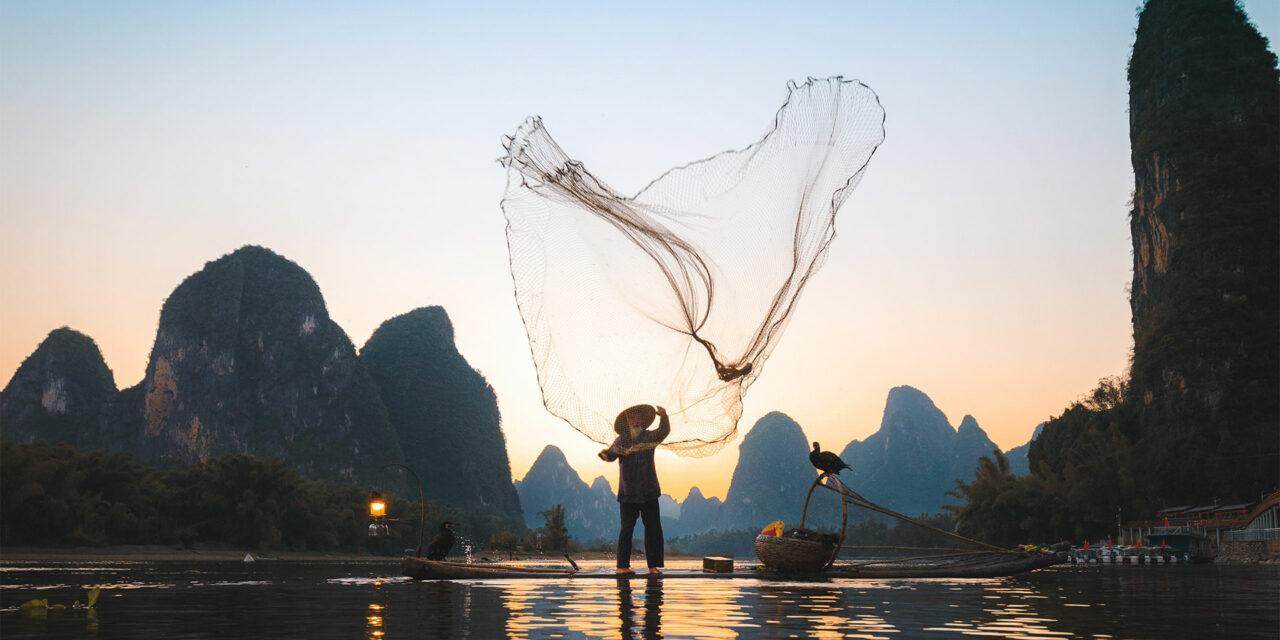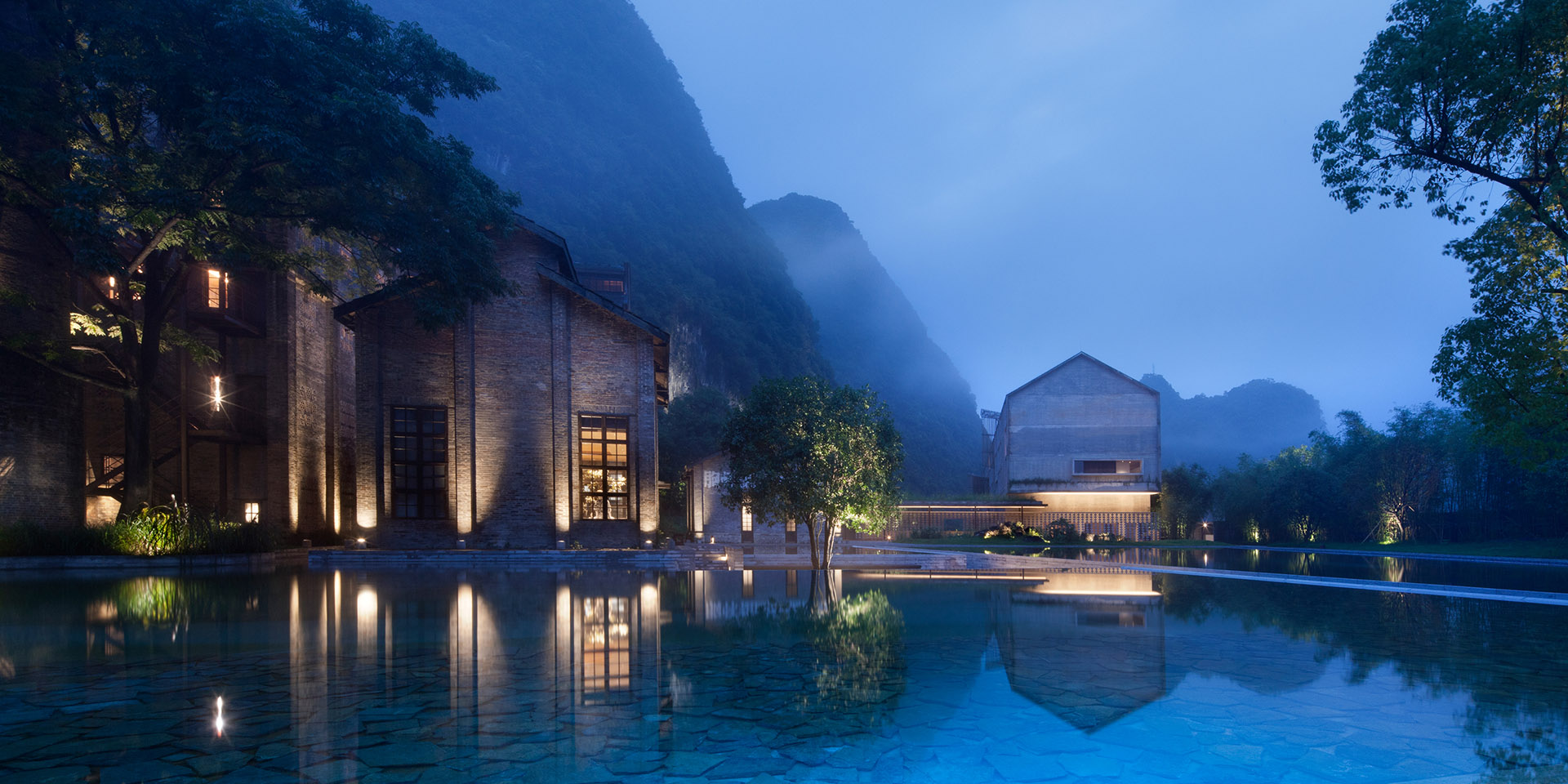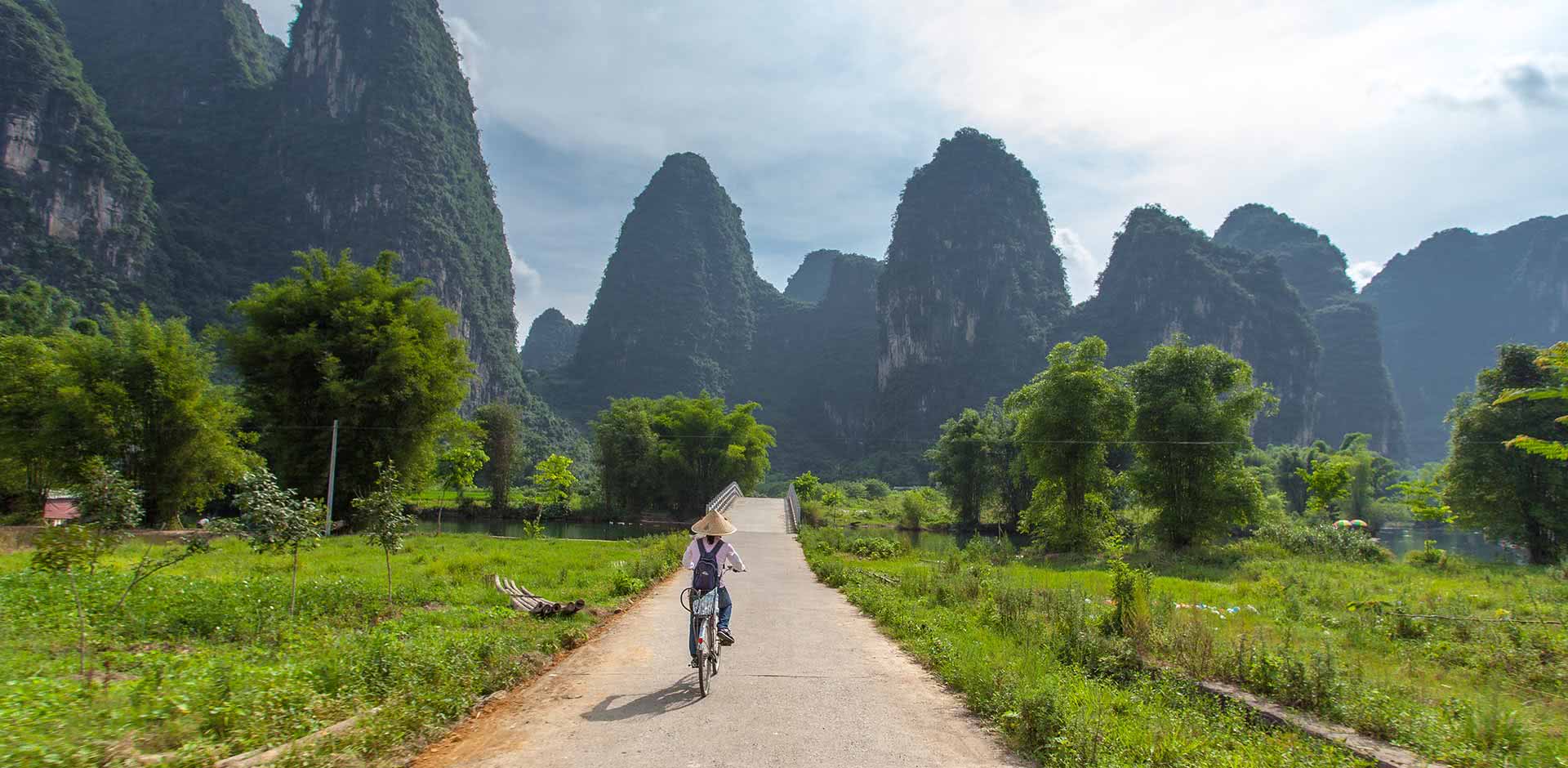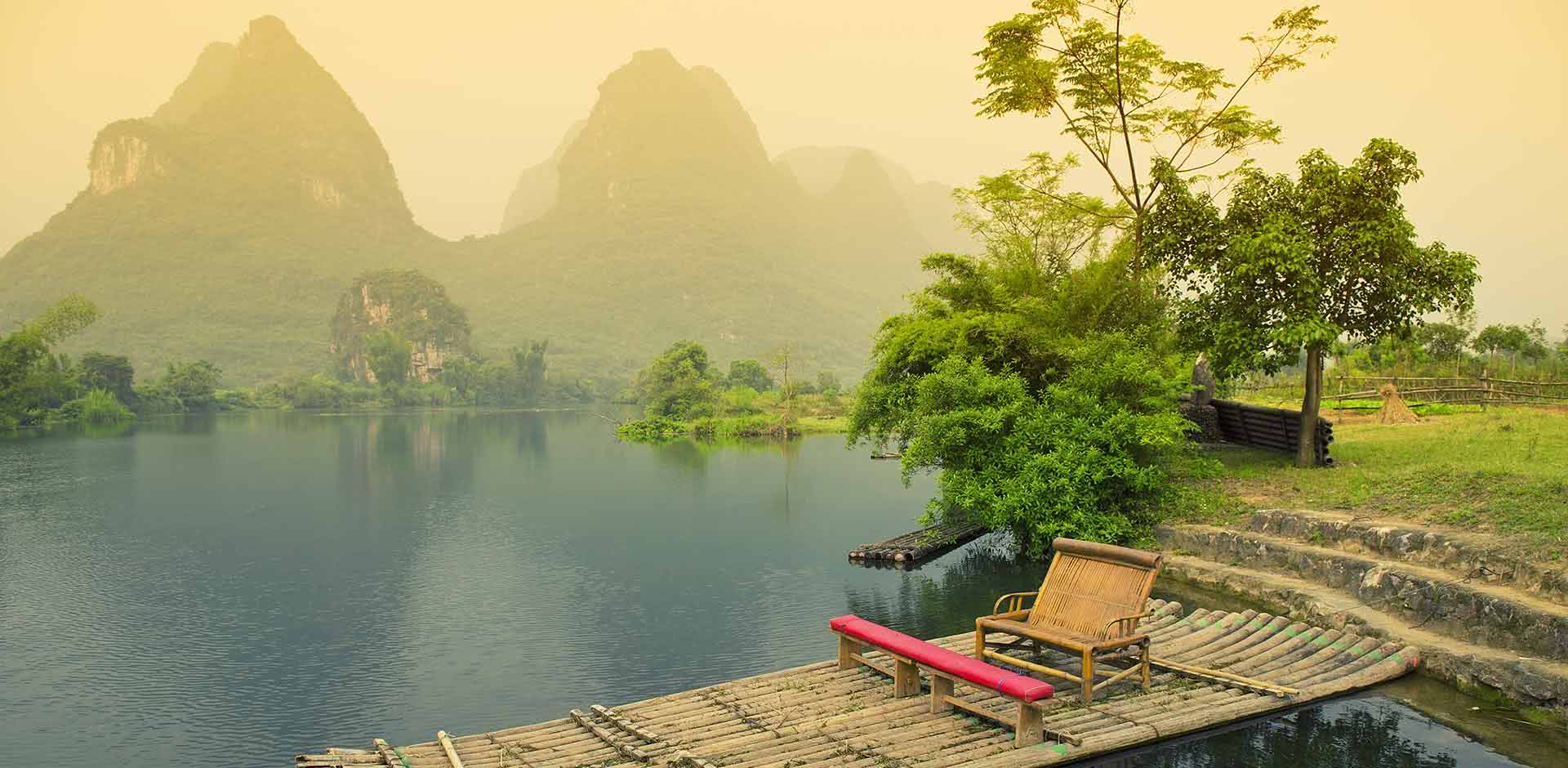A popular destination for foreign visitors to China, the Guilin area and Guangxi Zhuang Autonomous Region are home to some of the most beautiful scenes in the country. The karst mountain backdrops, winding rivers, and small villages scattered throughout are a feast for the eyes and the camera. Yangshuo and Xingping, both small towns close by to Guilin, offer pastoral scenery of the Middle Kingdom like something out of a fairy tale. Xingping in particular is home to the ancient cormorant fishing practice, and you can witness these fishermen demonstrating their art on the banks of the Li river at dusk.
Chuanshan
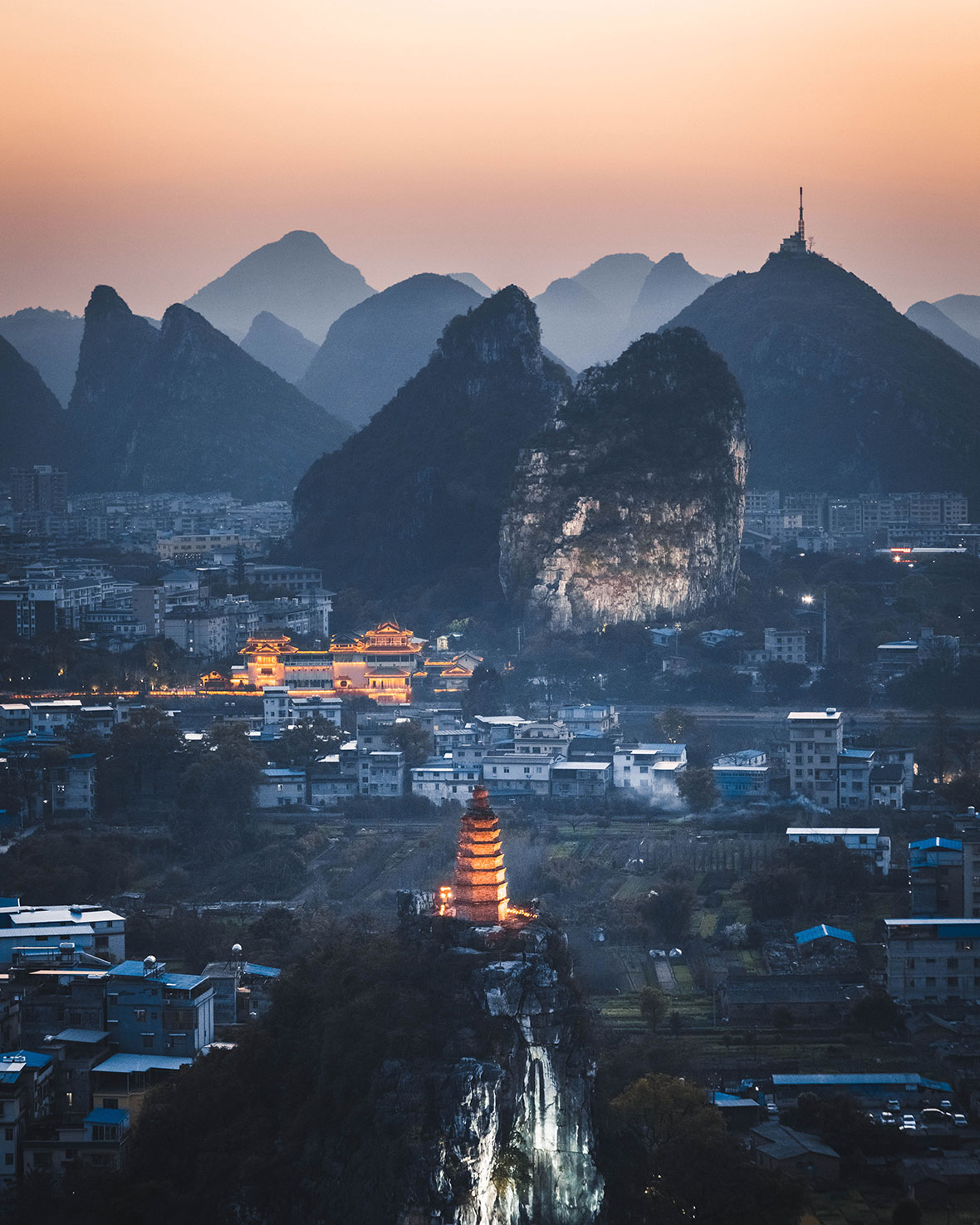
Having visited the Guangxi area multiple times, we often tend to skip the city of Guilin and head straight to Yangshuo. This trip, however, we decided to give Guilin a chance and were not disappointed. Guilin is full of fascinating tourist attractions, such as the Reed Flute Cave, Elephant Trunk Hill, and the Moon Hill. These spots attract thousands of visitors a day, and are the backbone of any tour guide’s itinerary.
However, our favourite spot in Guilin city was the hike up Chuanshan. The hike itself was fairly easy, and the views over Guilin were outstanding. From the top, you really get the sense that Guilin is not as big as one might imagine, especially for a Chinese city. Sunset was a great time to go, as the city lit up below us.
Tianxin Village
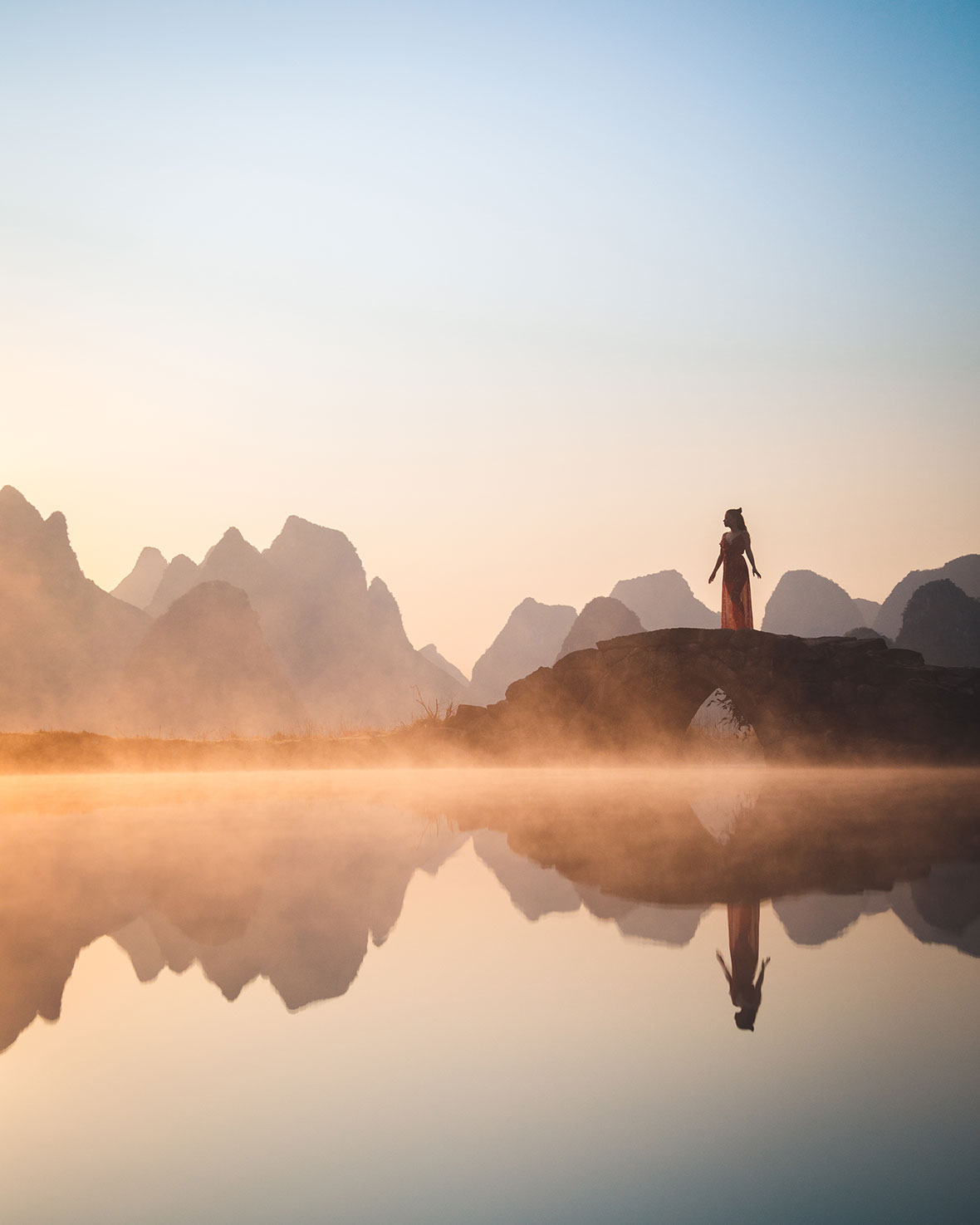
ABOVE: Sunrise in Tianxin Village.
Whilst staying in Guilin city, we decided to try and find Tianxin Village for a sunrise shoot. I had wanted to visit this place for so long, ever since seeing a picture of it online, but I was never able to find the location. I searched the internet for months for the location to no avail. Luckily, we met up with a local girl in Guilin and she knew the spot. Yali and her parents picked us up early the following morning and we drove an hour to Tianxin Village.
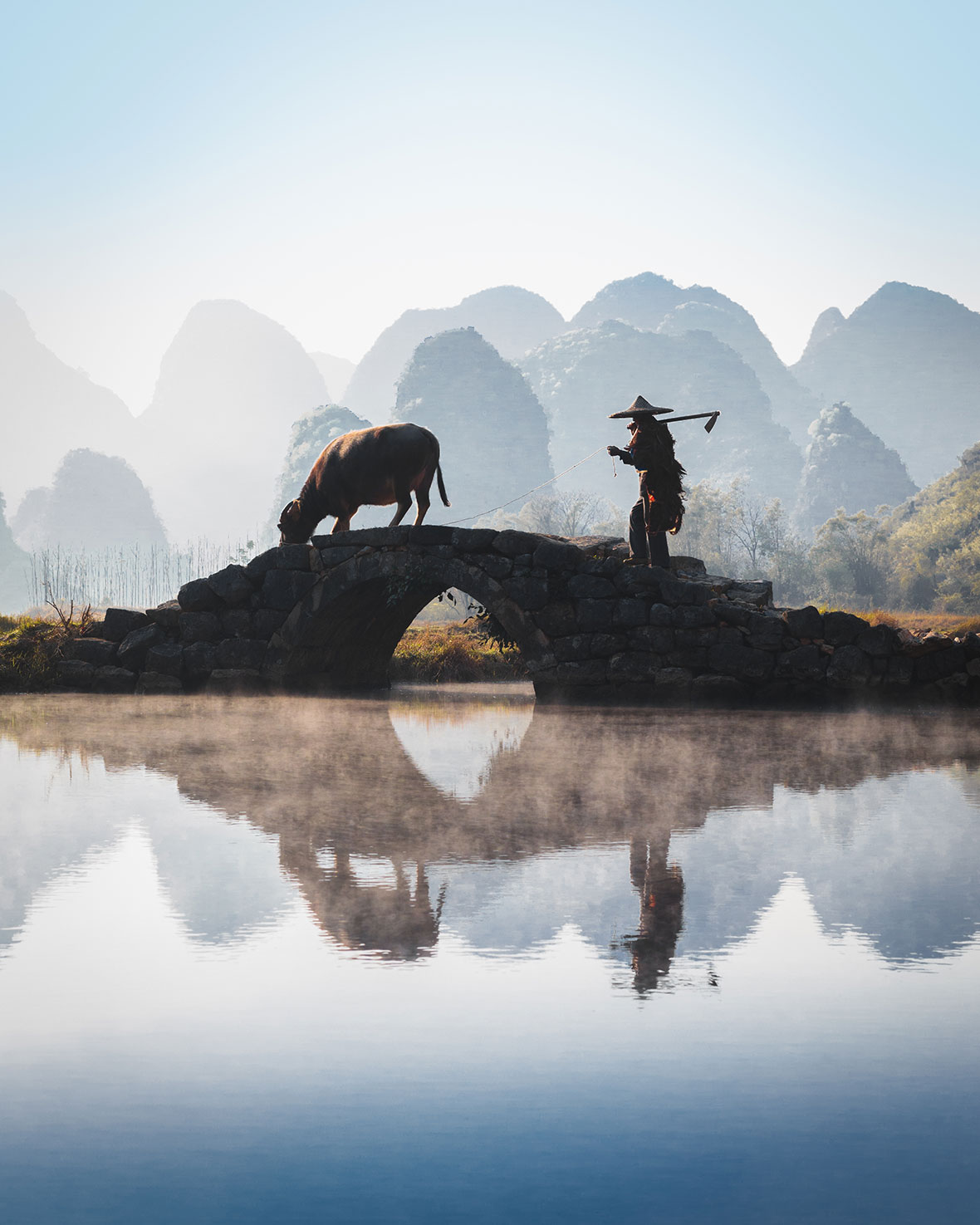
We couldn’t believe our eyes when we arrived; the sun was just about to come up; the low fog sat gently over the small ponds; and the bridge looked like something out of a fairy-tale, with the classic Guangxi karst landscape as the backdrop.
To this day, this has been one of my favorite sunrises and is the reason I love finding places off the beaten path, especially in China. Just when we thought the morning couldn’t get any better, a local farmer and his buffalo walked past us to make their way to the fields for the day, creating one of my most treasured photos from this trip.
Cuiping
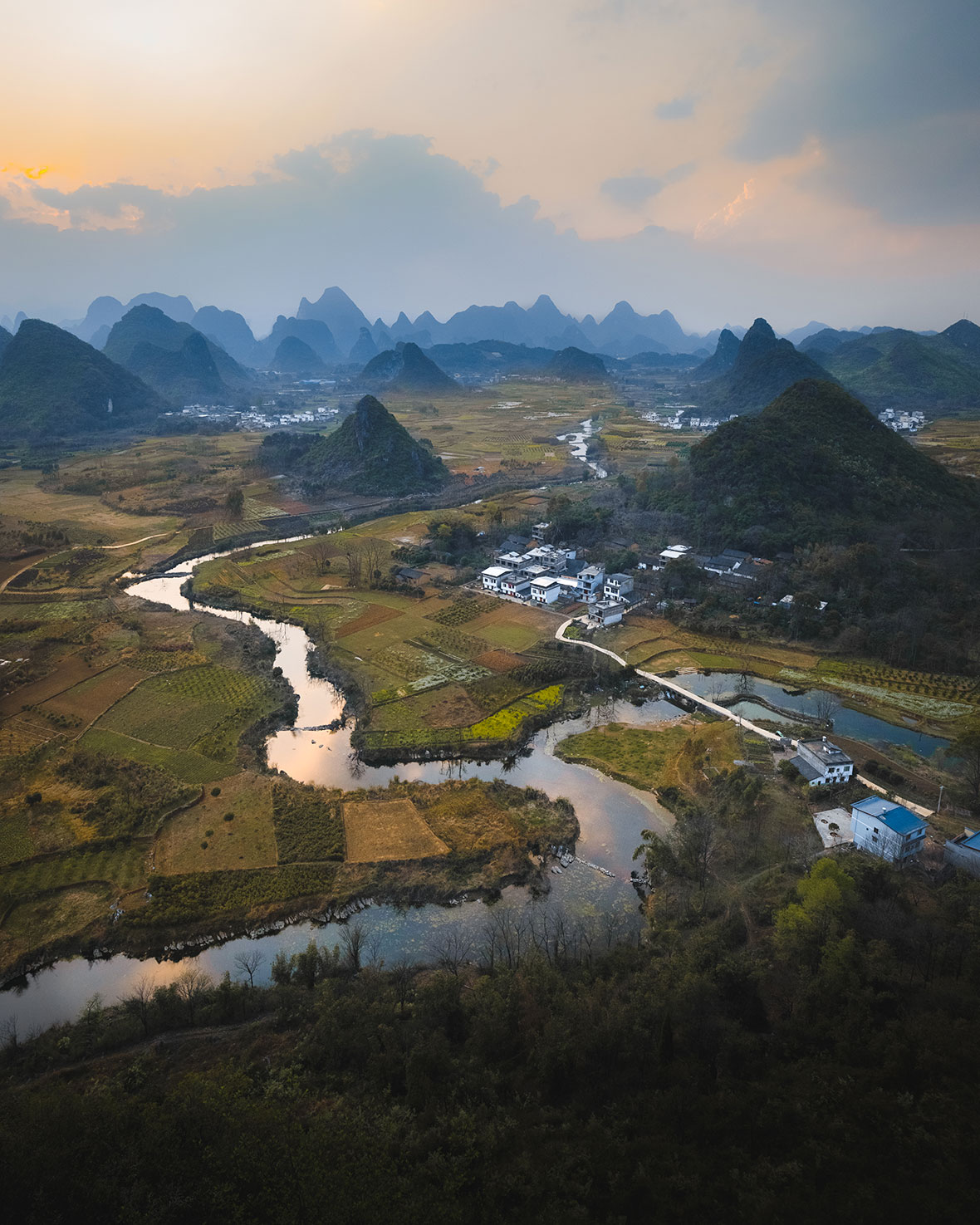
ABOVE: Above the Yangshuo region.
After our brief stop in Guilin, we headed to Yangshuo, a quick two-hour bus ride from Guilin city center. Yangshuo was once a peaceful town situated on the banks of the Li river, but it has become incredibly overpopulated with tourists in recent years and touts are stationed on every turn. Despite this, the town remains an incredible place to explore the scenery in the area, which is some of the best in China.
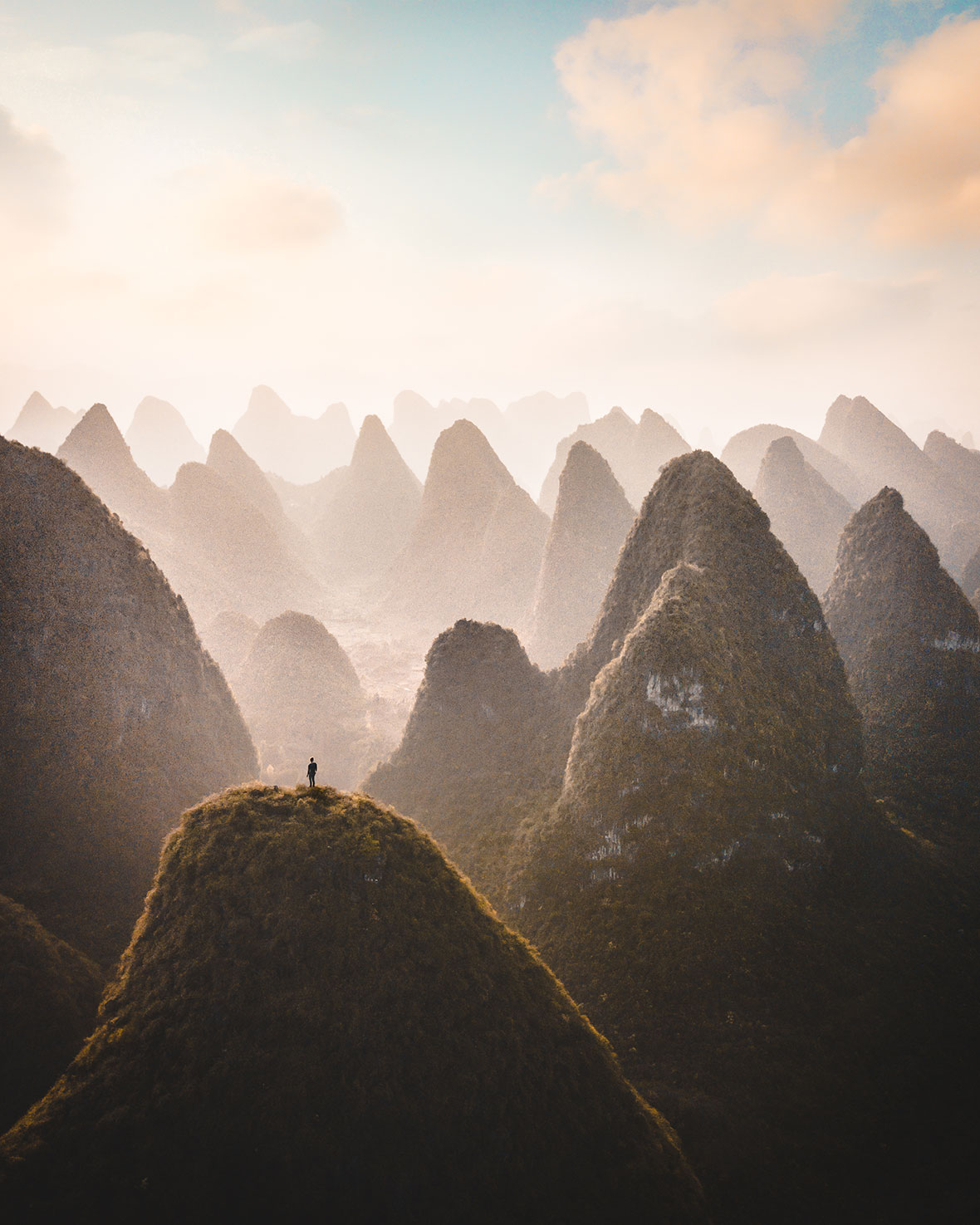
We chose to skip the Li River bamboo rafting and the TV tower hike and instead chose a hike just outside of Yangshuo, named Cuiping. Cuiping is a hotspot for sunset photography, so we were pleasantly surprised to reach the top and find we were the only people there.
The hike up is relatively easy: 20 minutes of steps built by the locals a few years ago and the views are out of this world. The river below bends around the Cuiping Hill, and the area is dotted with rice fields, orchards, and small settlements.
Make sure you visit on a clear evening to capture the sunset sky.
Grandpa Huang
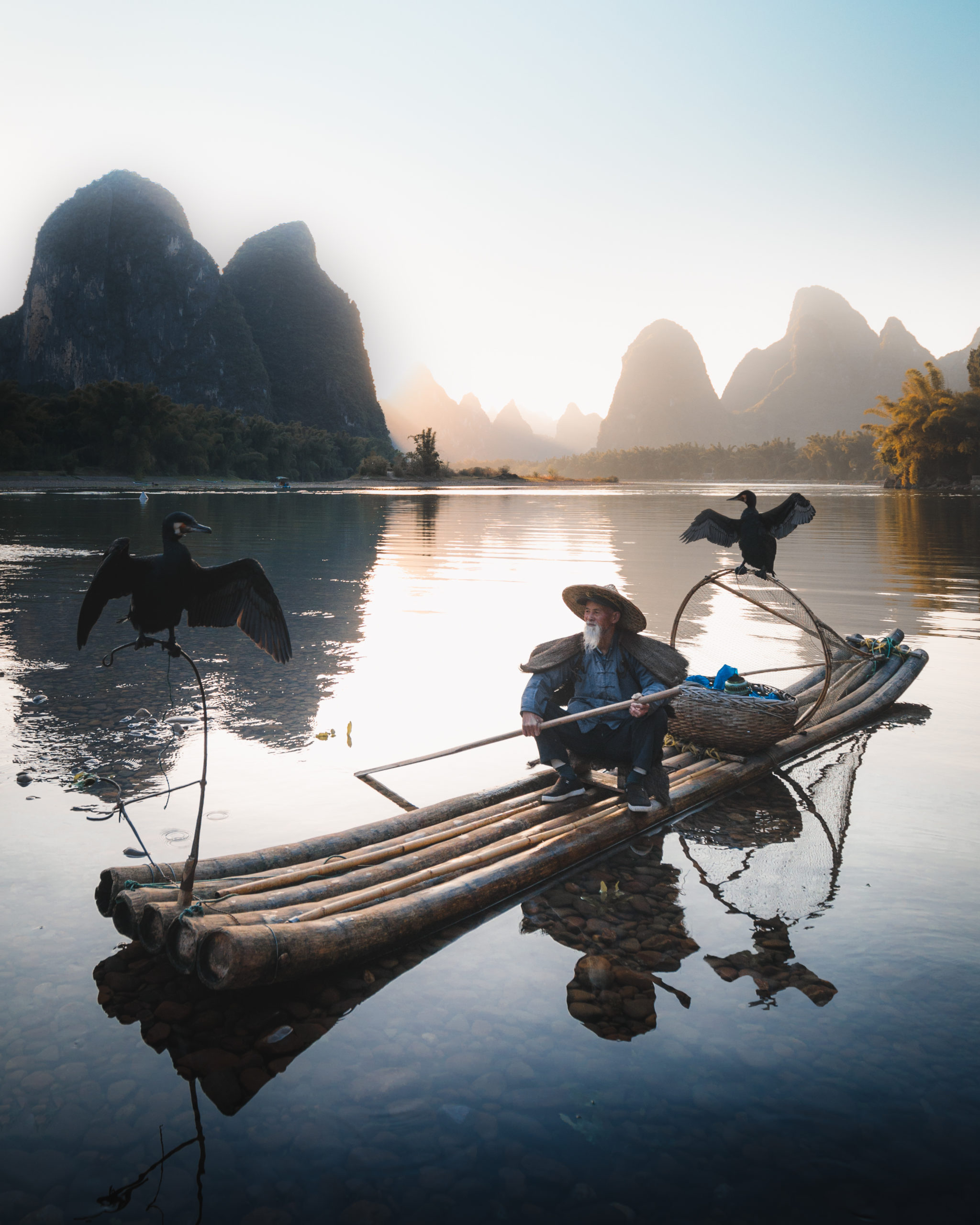
ABOVE: Grandpa Huang, the oldest of the cormorant fishermen in the area.
An hour drive from Yangshuo is Xingping, a small village which was last on our list in order to photograph the infamous cormorant fishermen. The town seems worlds apart from busy Yangshuo, and it was refreshing to escape the madness for a few days. We stayed at This Old Place, who arranged for us to have a private shoot with the oldest of the cormorant fishermen in the area, named Grandpa Huang. We headed down to the Li River at sunset to meet Grandpa Huang, and shot with him for well over an hour as the sun was setting.
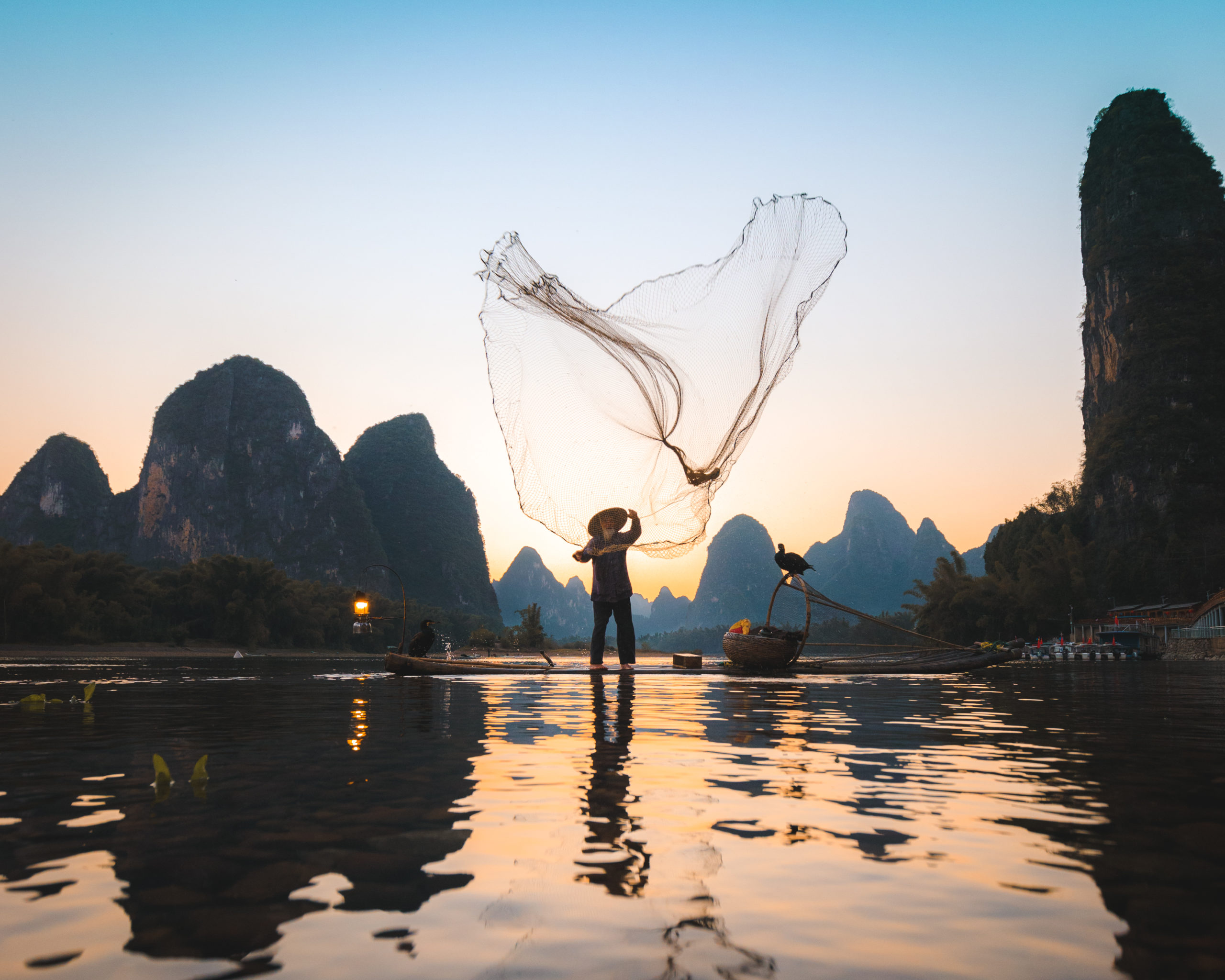
ABOVE: Grandpa Huang casting a net.
Cormorant fishing isn’t practiced anymore, due to modern fishing practices and the fact that these fishermen earn much more from photography shoots than they would have done from fishing. It was fascinating to see their culture in an art that was used for many generations. I’d highly recommend getting in touch with Grandpa Huang if you find yourself in Xingping.
Xianggong Hill
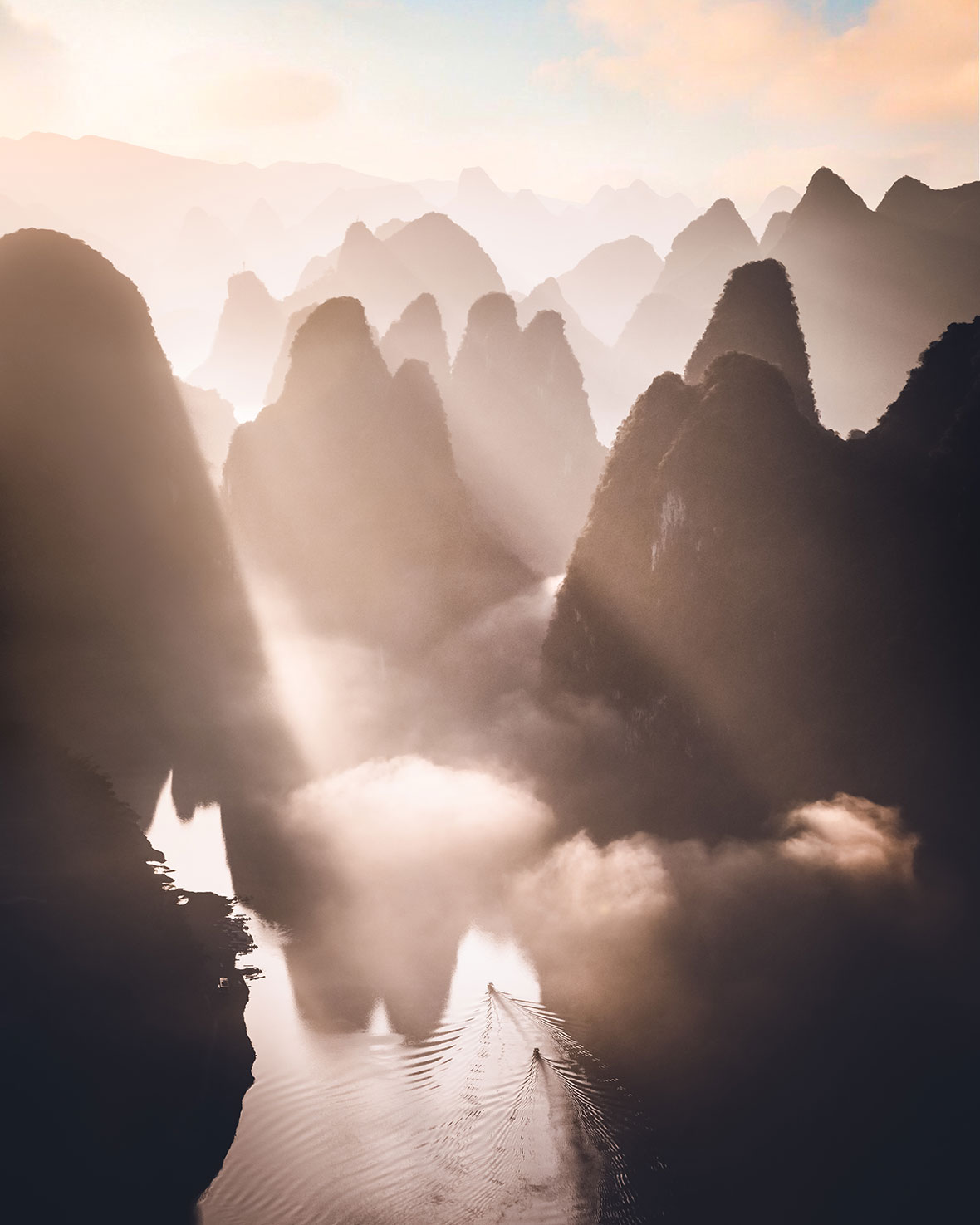
The following morning, we decided to try our luck at getting to and hiking Xianggong Hill, not too far from Xingping town. As it was so early, we hired a private boat to cross the river, followed by a driver to take us to the base of the hill and back. We missed the sunrise due to a late driver but managed to catch the light rays coming through the hills, which was definitely worth the semi-early start.
The hike again was fairly easy, and when we reached the peak, we saw that we were not the only people to have had the idea to hike up for sunrise; the viewpoint was incredibly busy. Luckily, the site is well set-up for photographers, with multiple platforms, so it wasn’t difficult to get a good shot. Watching the light come through the hills and hit the river below was one of the most hypnotizing views we had seen, and we ended up staying at the top for a couple of hours taking it all in.
A trip to this region of Guangxi, especially with the new 72-hour transit visa exemption in the region, is well worth the journey. It is an incredible experience to photograph some of the most iconic landscapes in Asia.


